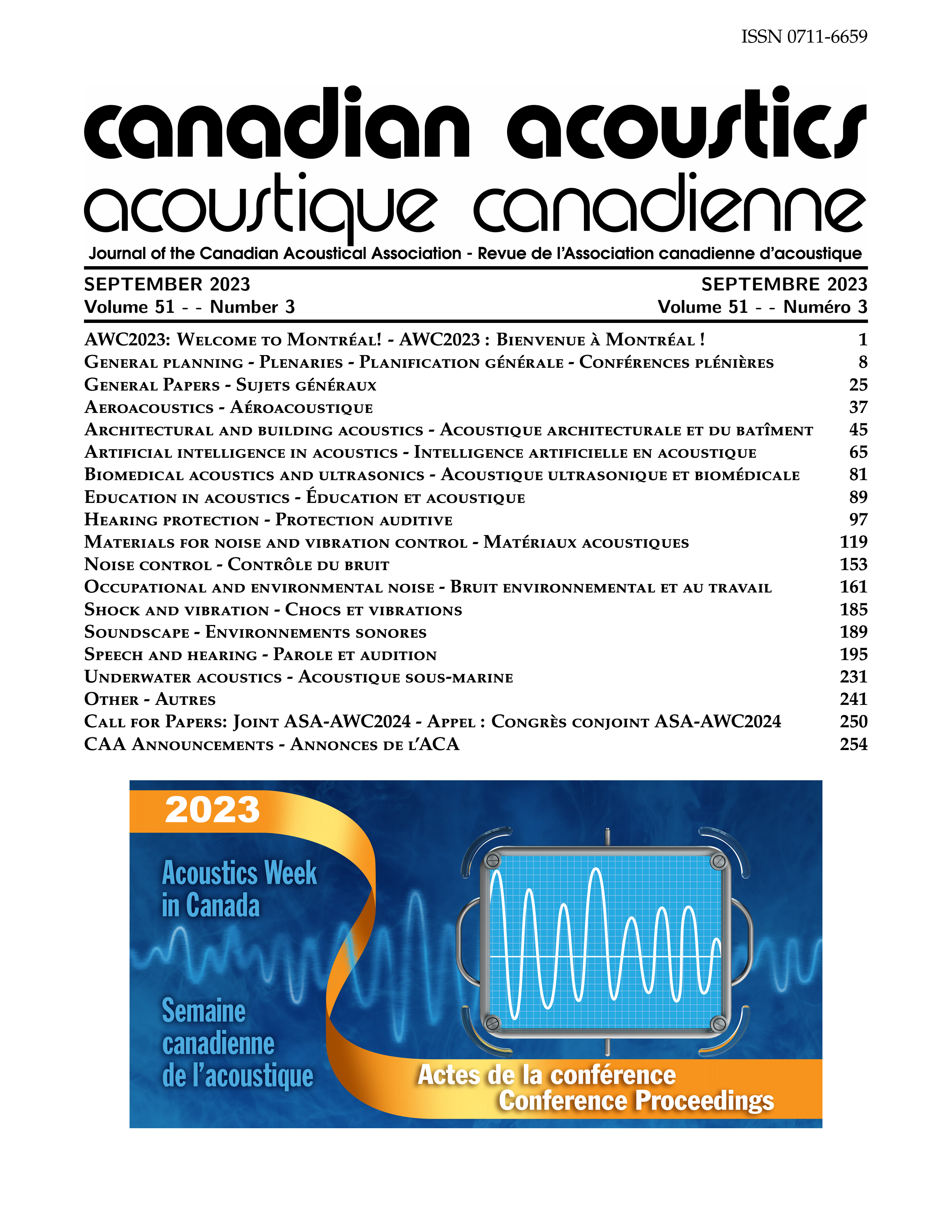Psychoacoustic Parameters and Ear Canal Role
Abstract
Background and objective(s): Effects of different parts of the human ear on the psychoacoustic parameters did not study before So, the purpose of this study was to see that the psychoacoustic parameters could change significantly in the effects of human ear canal and gender had an important role on it or not. Methods: White and sinusoidal noises were used at three levels, including 75, 85, and 95 dB as the stimulus sound pressure levels (SSPLs). The psychoacoustic parameters including loudness, sharpness, roughness and fluctuation strength were measured outside (cavum part of the external ear) and inside the right ear of each participant. The duration for each measurement was 10 seconds. Independent sample t-test and repeated measures ANOVA test were used for the statistical analysis, and the equality of means was rejected at p0.05). For both sinusoidal noise and the white noise in all three studied SSPLs the differences of four studied psychoacoustic parameters between outside and inside of participants ear are not statistically significant (all P values>0.05). Conclusion: It seems that human ear canal did not have any effects on the psychoacoustics parameters so we can say that ear canal does not have any roles in the noise induced annoyance.Additional Files
Published
How to Cite
Issue
Section
License
Author Licensing Addendum
This Licensing Addendum ("Addendum") is entered into between the undersigned Author(s) and Canadian Acoustics journal published by the Canadian Acoustical Association (hereinafter referred to as the "Publisher"). The Author(s) and the Publisher agree as follows:
-
Retained Rights: The Author(s) retain(s) the following rights:
- The right to reproduce, distribute, and publicly display the Work on the Author's personal website or the website of the Author's institution.
- The right to use the Work in the Author's teaching activities and presentations.
- The right to include the Work in a compilation for the Author's personal use, not for sale.
-
Grant of License: The Author(s) grant(s) to the Publisher a worldwide exclusive license to publish, reproduce, distribute, and display the Work in Canadian Acoustics and any other formats and media deemed appropriate by the Publisher.
-
Attribution: The Publisher agrees to include proper attribution to the Author(s) in all publications and reproductions of the Work.
-
No Conflict: This Addendum is intended to be in harmony with, and not in conflict with, the terms and conditions of the original agreement entered into between the Author(s) and the Publisher.
-
Copyright Clause: Copyright on articles is held by the Author(s). The corresponding Author has the right to grant on behalf of all Authors and does grant on behalf of all Authors, a worldwide exclusive license to the Publisher and its licensees in perpetuity, in all forms, formats, and media (whether known now or created in the future), including but not limited to the rights to publish, reproduce, distribute, display, store, translate, create adaptations, reprints, include within collections, and create summaries, extracts, and/or abstracts of the Contribution.


